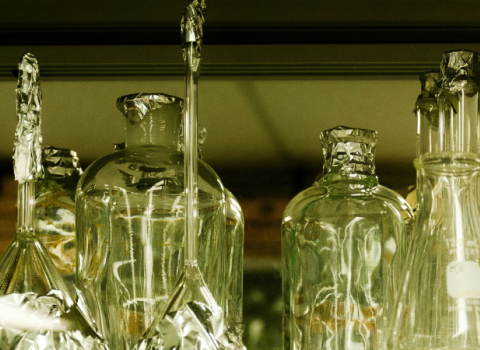A simple and versatile in-situ process facilitates the production of bacterial cellulose foam with controlled porosity.
There is a growing need for biocompatible and biodegradable, “green” materials for various industrial applications. Bacterial cellulose foam is a promising new material. The challenge is the cost-efficient production of the foam with the required material properties. For example, for tissue engineering large pore sizes, superior mechanical strength and geometrical freedom are desirable.
Invention
The use of bacterial cellulose as templating material highly depends on oxygen availability. The yield of cellulose production can be increased by maximizing the total contact area to oxygen in form of surfactant stabilized air bubbles. Also, a thickener is added to the media to create a stable foam structure. Acetobacter Xylinium is the most effective producer of bacterial cellulose in this context
Features & Benefits
- Optimization of bacterial cellulose production
- Adjustable porosity, mechanically strong
- Biocompatible, food-grade
Fields of Application
- Green composite materials for engineering
- Paper production, e.g. filtration membranes
- Food, e.g. thickener, structuring agent
- Wound healing, e.g. medical pads, artificial skin
Patent status: Patent pending
Publication: P.A. Rühs, F. Storz, Y.A. López Gómez, M. Haug, P. Fischer, “3D bacterial cellulose biofilms formed by foam templating”, npj Biofilms and Microbiomes 4 (2018) 21, doi:10.1038/s41522-018-0064-3x
ETH transfer
- [email protected]
- www.transfer.ethz.ch
- +41 44 632 23 82





 A unique international forum for public research organisations and companies to connect their external engagement with strategic interests around their R&D system.
A unique international forum for public research organisations and companies to connect their external engagement with strategic interests around their R&D system.